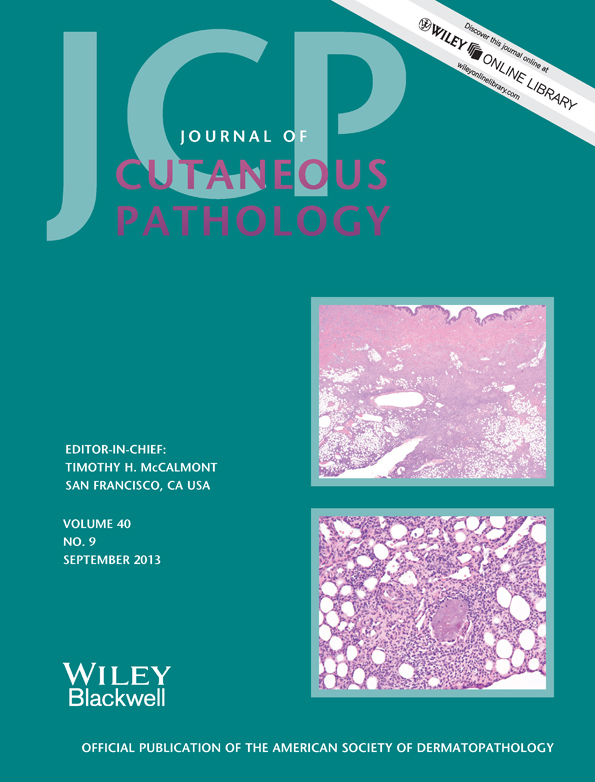Merkel cell carcinoma concurrent with Bowen's disease: two cases, one with an unusual immunophenotype
Abstract
The concurrence of Merkel cell carcinoma (MCC) and squamous cell carcinoma (SCC) is well known, and MCC concurrent with Bowen's disease has also been documented. Herein, we describe two cases of MCC concurrent with Bowen's disease, and one case exhibited an unusual immunophenotype. An 86-year-old male (Patient 1) and an 87-year-old female (Patient 2) presented with nodules of the chest and cheek, respectively. Histopathologic study revealed Bowen's disease and a proliferation of small round cells in the dermis and/or subcutis. Immunohistochemically, the round cells expressed endocrine markers. ‘Dot’ immunopositivity for cytokeratin (CK) (AE1/AE3) was observed in both patients. However, dot-like CK20 positivity was present only in the second tumor, and thyroid transcription factor-1 (TTF-1) was only positive in the first. Both cases were negative for Merkel cell polyomavirus (MCPyV). MCC concurrent with SCC usually does not involve detectable MCPyV infection, which suggests that combined MCC may develop through different tumorigenetic pathways, such as chronic ultraviolet exposure, as compared to pure MCC. Additionally, concurrent tumors may exhibit an unusual immunophenotype, such as TTF-1+/CK20(−).




